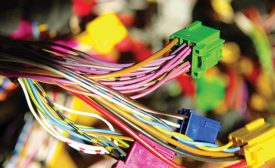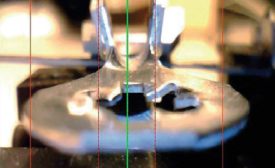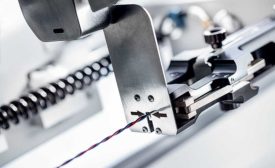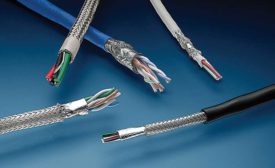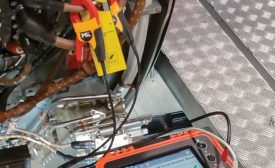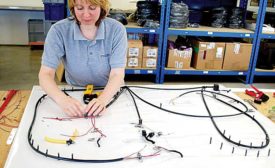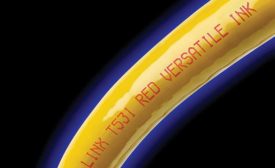Wire Processing Assembly
The Industrial Internet of Things improves data collection and traceability
Read More
Software Aids Harness Design at Porsche
To manage the increasing complexity of vehicle electrical systems, Porsche relies on object-oriented, database-driven design software.
October 19, 2017
Crimping Small Terminals
Advanced tools and processing equipment are designed to meet the many challenges of crimping small wire.
October 10, 2017
Wiring Autonomous Vehicles
Next-generation electrical systems will be critical to automated cars.
October 5, 2017
Joining Wire to Small Metal Parts
State-of-the-art welding and soldering equipment ensure that wires are securely joined to terminals or other wires.
July 5, 2017
Wire Twisting Technology
A new generation of equipment is helping harness assemblers meeting growing demand for twisted pair cables.
July 5, 2017
Commercial Protocols and Aerospace Cabling
Industry-standard cables may not possess the desired mechanical or environmental performance needed for aerospace applications.
July 5, 2017
Harness Failures: What’s to Blame?
When a wire harness fails, the testing system must be able to quickly pinpoint where and why it happened.
April 13, 2017
IPC-WHMA-A-620 Gets an Update
Five years after their last revision, IPC and WHMA have just published revision C of their popular A-620 standard for cable and wire harness assembly.
April 12, 2017
Options for Marking Wire and Cable
Lasers and continuous ink-jet printers create clear, long-lasting marks on wire and cable.
April 12, 2017
Never miss the latest news and trends driving the manufacturing industry
Stay in the know on the latest assembly trends.
JOIN TODAY!Copyright ©2024. All Rights Reserved BNP Media.
Design, CMS, Hosting & Web Development :: ePublishing
